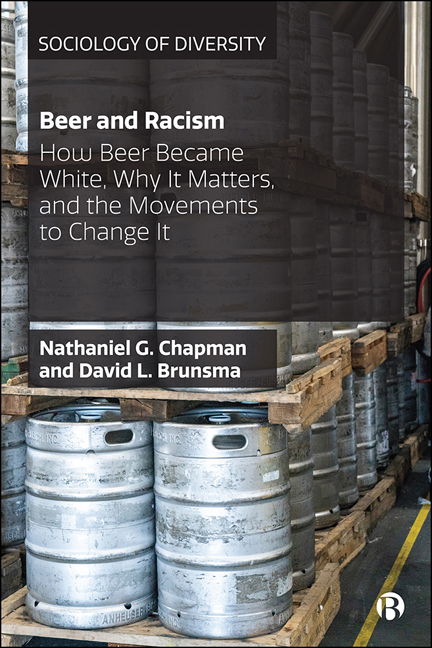Book contents
- Frontmatter
- Dedication
- Contents
- About the Authors
- Acknowledgments
- Foreword
- Series Editor Preface
- 1 Brewing Up Race
- 2 Racism, Brewing, and Drinking in US History
- 3 The Making of the (White) Craft Beer Industry
- 4 The Paths to Becoming a Craft Brewer and Craft Beer Consumer
- 5 Exposure, Marketing, and Access: Malt Liquor and the Racialization of Taste
- 6 Gentrification and the Making of Craft Beer White Spaces
- 7 #WeAreCraftBeer: Contemporary Movements to Change the Whiteness of Craft Beer
- Appendix A Respondents to the Semi-Structured Interviews
- Appendix B Interview Protocol
- References
- Index
4 - The Paths to Becoming a Craft Brewer and Craft Beer Consumer
Published online by Cambridge University Press: 25 February 2021
- Frontmatter
- Dedication
- Contents
- About the Authors
- Acknowledgments
- Foreword
- Series Editor Preface
- 1 Brewing Up Race
- 2 Racism, Brewing, and Drinking in US History
- 3 The Making of the (White) Craft Beer Industry
- 4 The Paths to Becoming a Craft Brewer and Craft Beer Consumer
- 5 Exposure, Marketing, and Access: Malt Liquor and the Racialization of Taste
- 6 Gentrification and the Making of Craft Beer White Spaces
- 7 #WeAreCraftBeer: Contemporary Movements to Change the Whiteness of Craft Beer
- Appendix A Respondents to the Semi-Structured Interviews
- Appendix B Interview Protocol
- References
- Index
Summary
Getting crafty
Given the historical realities that have built the current structure of the craft beer industry in the US, we today see a structure that is itself racialized, gendered, and exclusionary. The systematic erasure of black and brown practices of brewing and drinking in early America; the creation and solidification of pubs and taverns, and the subsequent establishment and legal consecration of such spaces as ‘white’ establishments; the construction and solidification of the three-tiered distribution system that defined the oligopolistic beer structure that launched the big beer families; and all the way through the signing of the Homebrewers Act in 1978— all these things have contributed to and solidified this structure. It is worth interrogating how it is that individuals have gotten and contemporarily get into the positions within the three-tiered system itself. The structure itself is one thing; the bodies within that structure are another, having the potential to either challenge the structural realities and/ or to build the culture and symbolic violence that continues to actively exclude people of color:
‘The people that I’ve seen here in the Chicagoland starting breweries, came either from a background of working for a larger brewery that became a macro, or are owned by a macro-brewery. They [brewery owners] are, largely speaking, young, white millennials. A lot of them come from the art world, where, for better or worse … they know that that's not something they could make money off [selling works of art], but they got into the brewing industry. You don't see a lot of different ethnicities … or other differences in the scene here.’ (Juan, Latinx, male, brewer/ owner)
In order to grapple with this, we asked our respondents several key questions that will help us to uncover the process connected to becoming a craft brewer and becoming a craft beer consumer, the two poles of the three-tiered distribution system— leaving out the fundamental structure of the middle-tier of distributors, who fundamentally connect the producer and the consumer (Withers, 2017) but in highly racialized, classed, and gendered ways. Their responses not only solidify what the industry has already known, and perhaps encouraged, but also illuminate the racial-organizational, structural, and cultural aspects that etch the paths more fully for some, and deny those in spades for others.
- Type
- Chapter
- Information
- Beer and RacismHow Beer Became White, Why It Matters, and the Movements to Change It, pp. 75 - 102Publisher: Bristol University PressPrint publication year: 2020



